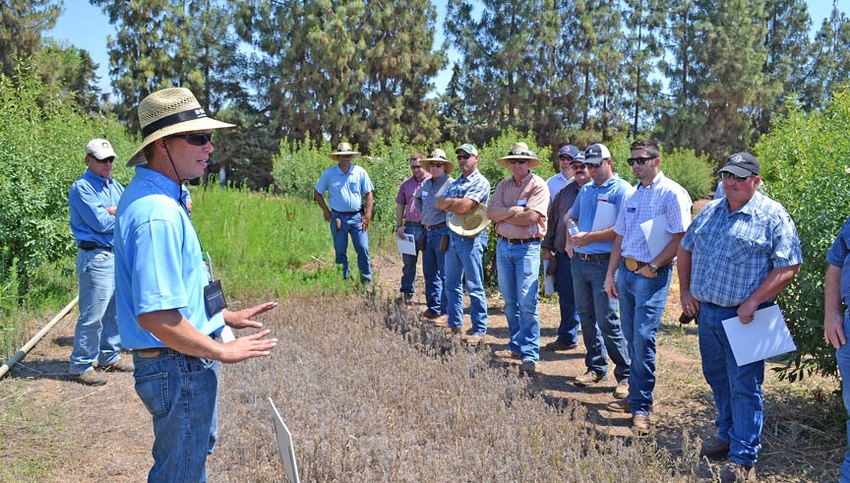July 12, 2013

With California almond harvest drawing closer and almond prices nearing the $3 per pound level, ant control is on the mind of PCAs and growers.
Old and new crop Nonpareil prices were in the $2.85 per pound range before the most recent 2013 USDA-NASS crop estimate of 1.85 billion pounds, down a surprising 7.5 percent from May's subjective forecast and 2 percent below last year's crop.
Prices like those made Doug Haller a popular man at a recent field day at the BASF research station at Dinuba, Calif. Haller is BASF’s product manager for Altrevin, the company’s new fire ant bait.
Haller was heralding the attributes of the new fire ant bait at the annual field day, which attracted more than 100 PCAs and growers to hear what’s new from BASF.
Altrevin is the newest product the company has registered.
Haller said it is the fastest acting ant bait on the market. It achieves 90 percent control in as little as six days after application with an efficacy stretching more than 60 days.
Haller quotes a University of California study that estimates the quick knock down of moderate first ant infestation early on can save 140 pounds of nuts, based on an average yield of 2,000 pounds per acre. At roughly $3 per pound, that is significant.
Altrevin had already gone out before the first day and more could be used before harvest begins in late July or early August. Haller said retreatment could be necessary if ants from uncontrolled orchards invade a treated grove.
The broadcast use rate is 1.5 pounds per acre with a pre-harvest interval of just five days. It is registered for use on pecans, citrus, grapes and other tree nuts.
The maximum use rate per season is 6 pounds per acre.
Haller points out that Altrevin is a new mode of action chemistry.
Field day visitors also heard about a new registration for Priaxor on tomatoes to control a wide range of diseases, including black mold, powdery mildew, early blight and anthracnose. It has a labeled use rate of 4 to 8 pounds, depending on the targeted disease. It carries a 12 hour re-entry interval and a seven day pre-harvest interval.
It contains two modes of action, Xemium and F500.
The same two fungicides are in another new BASF fungicide, Merivon, that has recently been registered for use on apricots, cherries, nectarines, peaches, plums and prunes. The company is expecting an expanded label for almonds this fall.
More from Western Farm Press
Ag and sexual assault: Get your facts straight, Frontline
Agriculture apocalypse just around bend, again
Herbicide drift: How to avoid it
Marijuana farming's crushing environmental impact in California
You May Also Like




